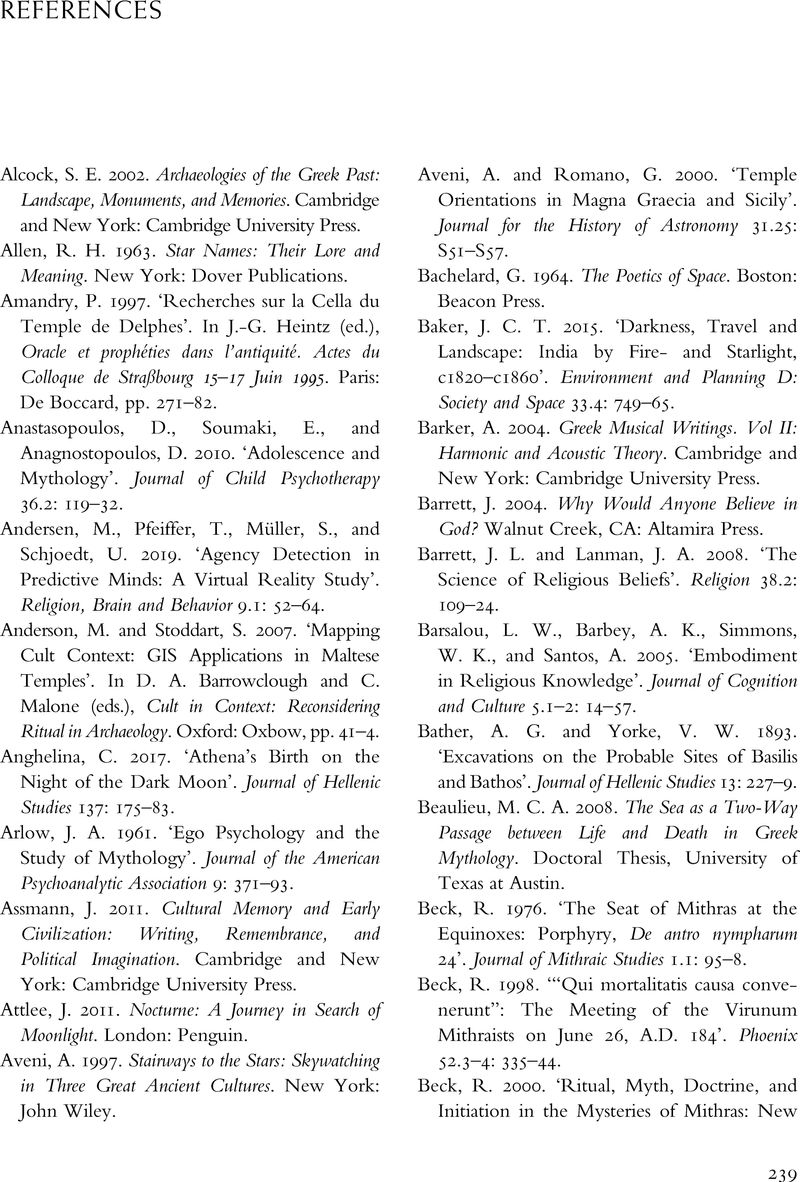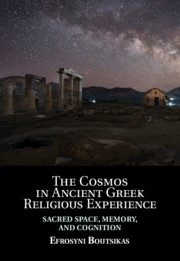Book contents
- The Cosmos in Ancient Greek Religious Experience
- The Cosmos in Ancient Greek Religious Experience
- Copyright page
- Dedication
- Contents
- Illustrations
- Graphs
- Tables
- Acknowledgements
- One Introduction
- Two Methodological Advances, Approaches, and Considerations
- Three Worship in Space and Time
- Four Astronomy and Perceptual Cognition in Apolline Cults
- Five The Cosmos in Manifestations of Identity, Memory, and Remembrance
- Six Cosmic Time in Greek Mystery Cults
- Seven Epilogue
- Appendix
- Glossary
- Notes
- References
- Index
- Plate Section (PDF Only)
- References
References
Published online by Cambridge University Press: 04 November 2020
- The Cosmos in Ancient Greek Religious Experience
- The Cosmos in Ancient Greek Religious Experience
- Copyright page
- Dedication
- Contents
- Illustrations
- Graphs
- Tables
- Acknowledgements
- One Introduction
- Two Methodological Advances, Approaches, and Considerations
- Three Worship in Space and Time
- Four Astronomy and Perceptual Cognition in Apolline Cults
- Five The Cosmos in Manifestations of Identity, Memory, and Remembrance
- Six Cosmic Time in Greek Mystery Cults
- Seven Epilogue
- Appendix
- Glossary
- Notes
- References
- Index
- Plate Section (PDF Only)
- References
Summary

- Type
- Chapter
- Information
- The Cosmos in Ancient Greek Religious ExperienceSacred Space, Memory, and Cognition, pp. 239 - 260Publisher: Cambridge University PressPrint publication year: 2020

